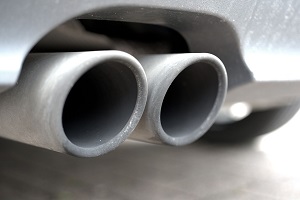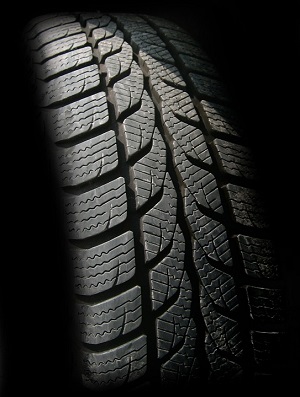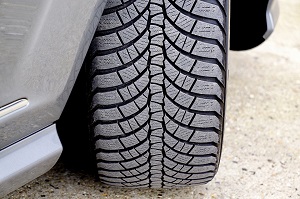Posted on 6/15/2020

Your vehicle’s engine produces small explosions of harmful emissions which come from the combustion chamber. These explosions produce dangerous gases such as carbon dioxide, carbon monoxide, hydrocarbons and nitrogen oxides. For safety, these dangerous gases are dispersed away from your vehicle’s cabin using an exhaust system, which the muffler is a key component of. To explain how the muffler works, we need to know the different components of the muffler. There are four sections in an automobile’s muffler: Inlet — The inlet attaches from the exhaust system. Exhaust gases and sound enters the inlet from the exhaust system. Resonator — The resonator acts as an echo chamber by reducing the overall noise volume of the engine by canceling sound waves. Perforated tubes — The perforated tubes are metal tubes located inside the muffler and are responsible for how loud or quiet your car sounds. They suppress the sound and work to increase your vehicle performance. Outlet — The outlet em ... read more
Posted on 5/29/2020

Damage to your windshield happens unexpectedly. The windshield is an important safety device of your vehicle, with its main function being to protect passengers as well as ensure the airbags properly do their job of protecting the vehicle occupants. A small chip on your windshield can turn into a crack across the entire length of the surface and require windshield replacement if not repaired quickly. Your windshield is there to help protect you from outside elements coming into the vehicle and also provides up to 60% of structural support to your vehicle. When your windshield is damaged, it compromises your vision when driving and can cause an accident. Not only is having a cracked windshield dangerous, it is also against the law in most states. The laws in different states are different, but most states in the United States require that your windshield be free of cracks or anything that can obscure your vision while driving. If you have a cracked windshield, depending on the severity ... read more
Posted on 5/15/2020

A crucial factor in your vehicle’s health, efficiency and performance is getting regular tire rotations. A tire rotation is when the tires of your vehicle are moved from one position on the vehicle to another. The front tires will move to the rear and the rear tires will move to the front, typically in a cross-diagonal direction, meaning they will also change sides. Your vehicle carries more weight at the front, so front tires will typically wear out faster. Tire rotation is done to prevent the uneven wear this can cause and to prolong the life of your tires. Your tires should be rotated at the same interval you get an oil change. The guidelines in your vehicle’s owner manual offer timing as well as the best rotation pattern for your vehicle and type of tires. The tires are the only part of the car which make direct contact with the road and influence your vehicle handling, ride, braking and safety. For optimum performance, tires must have the correct air pressure, tread depth, balan ... read more
Posted on 5/5/2020

Keeping your tires properly inflated is a key to getting the maximum fuel efficiency from your vehicle. Properly inflated tires also reduce tread wear, improve your car’s stopping distance, and decrease the chances of a blowout. Nitrogen-filled tires are said to have the benefit of keeping your tires inflated longer than the standard compressed air tires. The air in your tires eventually escape through the tire’s inner liner, but nitrogen-filled tires take a longer time. Routine maintenance is critical to long tire life, and proper tire pressure will ensure the good health of your tires. The greatest benefit that nitrogen-filled tires are said to provide is keeping your vehicle’s tires inflated longer, which saves you money at the pump. Even so, researchers have concluded that although nitrogen will slow down tire inflation loss, you’ll still need to check and top off your air roughly every other month to stay within the ideal inflation range. Nitrogen-filled Tires FAQ Q: Will I get b ... read more
Posted on 4/16/2020

Wheel alignment is the process of adjusting the angles of the wheels on your vehicle to the specifications of your vehicle manufacturer. When your vehicle was built, the wheels were perfectly positioned to the manufacturer’s ideal specifications, but over time your vehicle loses its alignment. Misalignment issues can lead to serious safety and performance issues and costly repairs. A wheel alignment service will optimize the various angles of your wheels to each other, and to the road. Aligning your wheels requires the vehicle to be placed on a wheel alignment machine. This machine uses specific measurements to allow the technician to set and adjust the suspension components back to the factory specifications. The common alignment angles are camber, caster, and toe. These angles become misaligned due to potholes, hitting curbs, speed bumps, being in an accident and other driving hazards. So, how do you know when your vehicle requires a wheel alignment? The Most Common Indications You ... read more